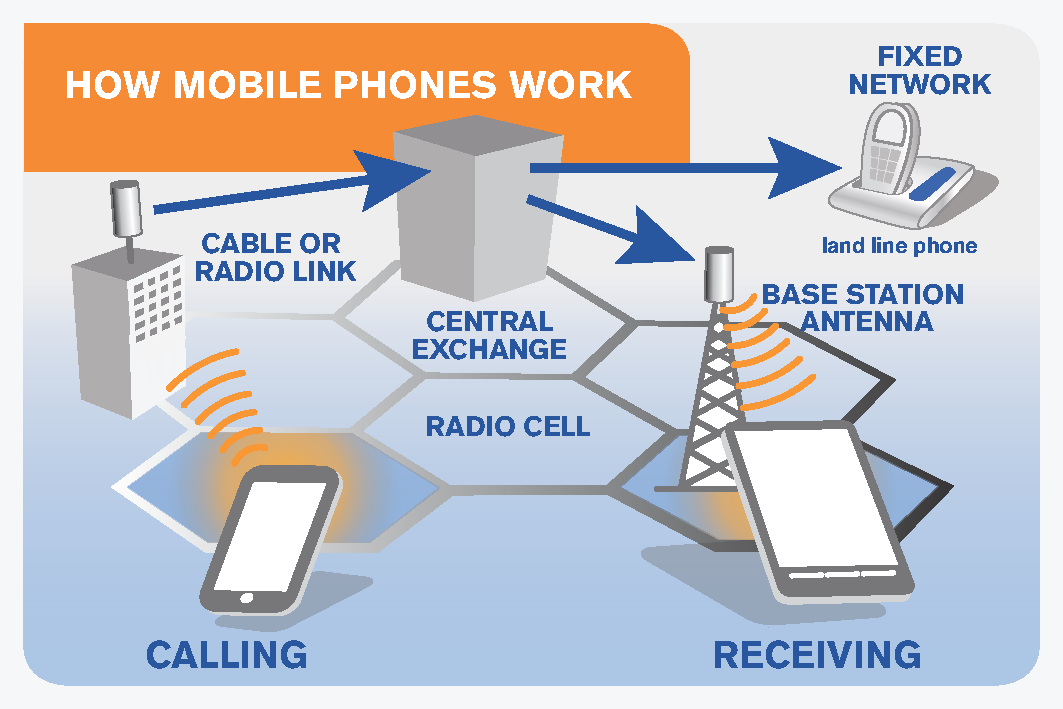How mobiles and wireless devices work
A mobile phone or wireless device is a low-power two way radio operating at a maximum of 2 watts (peak). It contains both a transmitter and a receiver and uses radio frequency fields to send and receive calls, text messages, emails, pictures and data.
When you make a call on a mobile phone, send or receive text messages or data, you are connected to a nearby base station through a radio frequency signal. The base station then communicates with the core of the network to a central exchange to determine where the call is to be forwarded to, then either your call is forwarded to the fixed line network and to an individual fixed land line phone, or if you are calling another mobile phone, your call will be forwarded to another base station and on to the mobile phone you are calling.
When you access data via your mobile device, the central exchange connects you to the internet.

Mobile phone base stations are low-power, multi-channel two-way radios located inside an equipment hut or cabinet. The base station antennas, which transmit and receive the radio signal, can be mounted on transmission towers, poles, roof-mounted structures or in small microcell boxes providing localized coverage. Mobile phone base station radio transmitters typically operate at between 2-50 watts. In rural areas base stations may use additional power amplifiers for the transmitter and receiver to extend the coverage.
The location and positioning of the base station antennas are carefully chosen to match the required coverage area. Small base station antennas are often located inside buildings to provide dedicated indoor coverage.